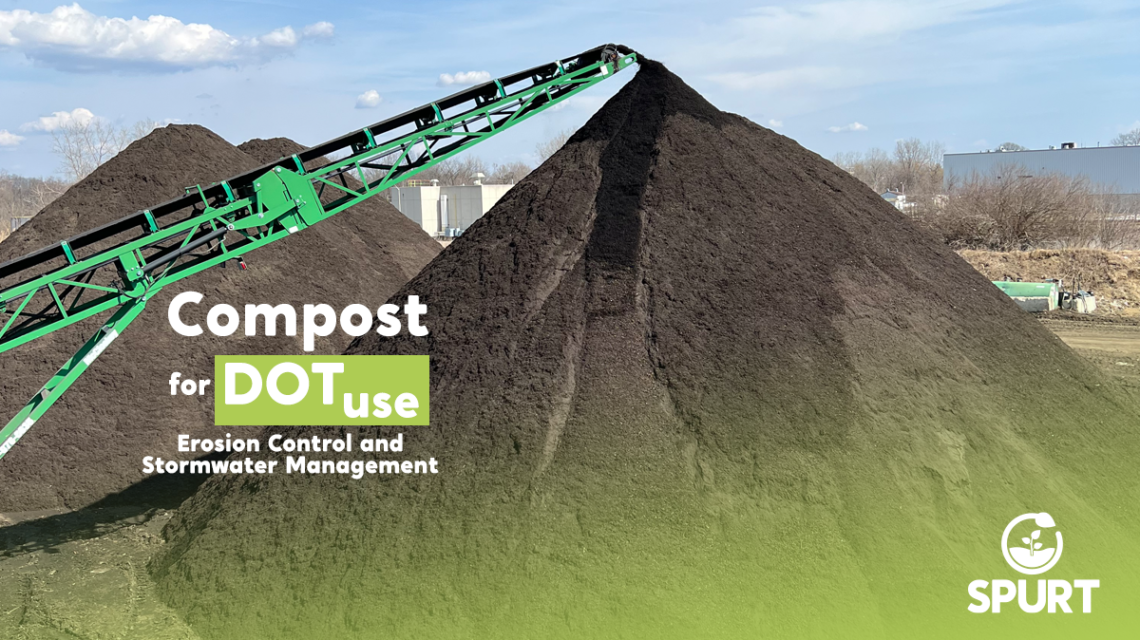The US EPA has designated over 50,000 impaired water body segments in the United States, identifying sediment as the leading source of surface water pollution. In recent years, several agencies and DOTs have published guidance documents for using compost to protect water quality, erosion control, sediment control and post constructions storm water management.
DOTs across the country have shown their confidence in the efficacy of the Seal of Testing Assurance program’s STA Certified Compost products by requiring its use on projects under their jurisdiction.
Landscape architects, engineers, and Department of Transportation’s shared specifications will help you get started in specifying STA Certified Compost for your project. For ease of assuring compliance, many DOTs have customized lab Compost Technical Data Sheets (CTDS) through the STA Certified Compost program that show whether each parameter tested meets the specifications for that state DOT’s compost use.
Compost in bioretention media
Blending compost into a sand-based media is a method used for stormwater management. The media and overall feature are typically used to capture sheet flow generated water and treat it using natural processes. The system captures and slowly releases water, often removing sediment and chemical contaminants. Some of the key benefits of this practice include:
- Increases water-holding capacity, reducing irrigation requirements,
- Slowly releases nutrients, typically eliminating fertilization for 1-2 years,
- Increases cation exchange capacity, improving the capture of chemical contaminants,
Enhances microbial processes, better degrading petroleum hydrocarbons, and improves vegetation establishment and long-term sustainability.
Application:
- Pre-treat the water flow to remove excess debris and sediment before it reaches the bioretention feature to help minimize on-going maintenance requirements.
- Excavate biotreatment area, as outlined on the engineering plans.
- Where an inch or more of water is required to drain, install an under drain consisting of a 4 to 6-inch perforated pipe, surrounded by a 6 to10-inch layer of pea gravel/stone which leads to the discharge point.
- Fill a basin with compost using a telebelt or slinger truck. Place a 2 ½ foot layer (minimum) of media. The bioretention planting and treatment media should contain 20 to 40% compost (by volume), with the remainder being a coarse sand (0.02 in – 0.04 sizing), or mineral aggregate by volume. Some media recipes also contain 10 to 20% sandy loam soil. The media is typically required to possess a minimum infiltration rate of 2 to 5 inches per hour.
- Rake soil surface smooth prior to planting, removing large clods, roots, stones greater than 2 inches, and other material which will interfere with planting and subsequent site maintenance.
- Plant shrubs, trees, or desired vegetation. Water thoroughly after planting.
Apply 2–3 inches of mulch over the treatment area, covering the media, and water into place. Depending on the nutrient content of the compost, pre-plant fertilization may be reduced or avoided entirely.
Compost blankets for erosion control
This work consists of applying a coarser compost onto a sloped soil surface to prevent runoff, reduce erosion and enhance vegetation establishment for long-term slope stabilization. This technique can be used for both temporary and permanent erosion/sediment control applications in areas affected by sheet flow erosion patterns (not concentrated flow). The significant benefits of this method, widely used by DOTs are:
- Reductions in sediment movement: 67–99%,
- Stormwater runoff reductions: 60–97%,
- Nutrient savings: 50–100% for multiple years,
- Water savings – minimum of 25%,
- Enhances seed germination, plant establishment and slope cover percentage,
- Cost of 1-2 inch application is equal to single and double rolled erosion control blankets, and less if seeding,
- Assists with building projects seeking LEED credits.
Application:
- Coarse compost should be uniformly applied over the graded surface using a grading blade, pneumatic blower, slinger, or other spreading unit, to a depth described below. The goal is to achieve 100% soil coverage with the compost layer. Areas receiving greater precipitation, possessing a higher erosivity index, or which will remain unvegetated, will require greater application rates.
- Seed may be applied to soil surface before compost application, during or after. If applied after compost application, seeds should be covered to protect them from birds and desiccation (drying out).
Apply compost layer uniformly, achieving 100% soil coverage, approximately 3 feet beyond the top of the slope or overlap it into existing vegetation. On highly unstable soils, use compost in conjunction with appropriate structural and diversion measures. Follow by seeding or ornamental planting if desired. Where possible, track (compact) the slope, before or after compost application, using a tracking bulldozer or other appropriate equipment. The indentations can capture water and prevent any water from moving between the soil-compost interface.


